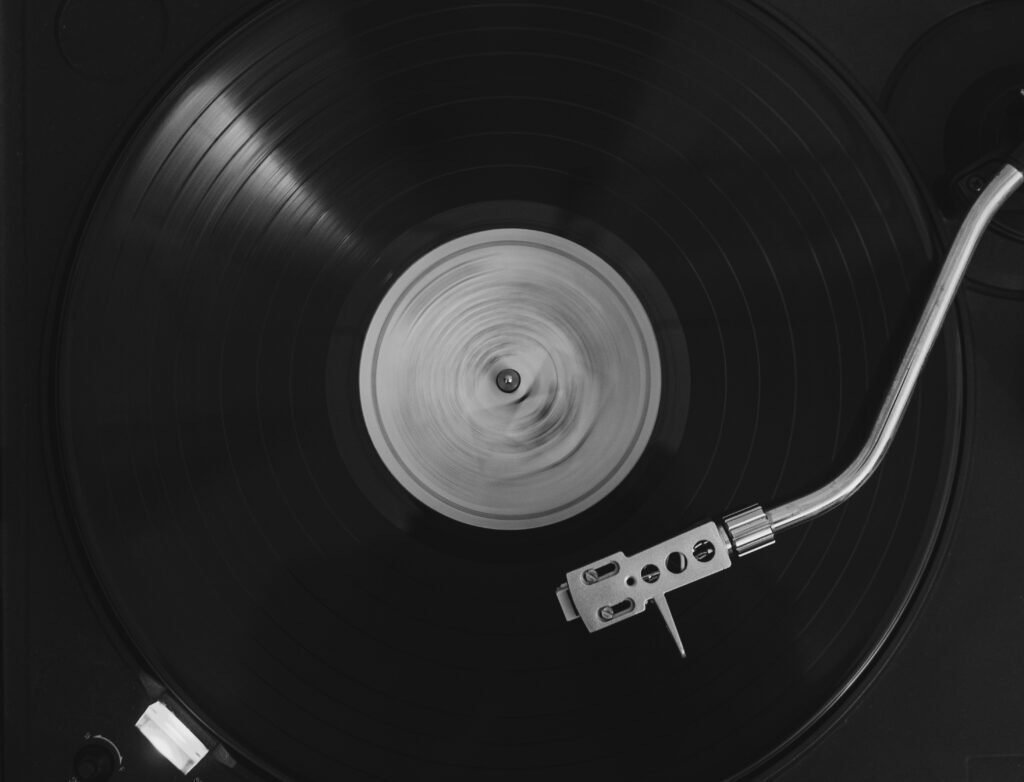Billie Eilish’s debut studio album, “When We All Fall Asleep, Where Do We Go?”, marks a profound moment in both her career and the broader music landscape of 2019. Released when Eilish was just 17 years old, the album not only consolidates her status as a pop prodigy but also introduces a seismic shift in what mainstream pop can sound like. A stark departure from the more conventional tracks that populated her earlier EP “Don’t Smile at Me,” this album dives deeper into a haunting mix of electropop, trap, and indie pop, all swathed in a brooding, atmospheric production that has since become a signature for Eilish.
Artistic Intentions
The album’s artistic vision is as bold as it is introspective, exploring themes of depression, desires, and fears with an unflinching honesty that resonates with a generation increasingly comfortable with discussing mental health. Billie, alongside her brother and collaborator Finneas, crafted a soundscape that is as eclectic as it is thematic, using innovative production techniques that include synths, whispery vocals, and unexpected shifts in tempo and tone. From the dissonant sounds of “bury a friend” to the dreamy melancholy of “when the party’s over,” each track serves as a vignette, painting a larger picture of adolescent angst and the existential ponderings of a young artist.
Eilish herself has noted in interviews that with this album, she wanted to challenge listener expectations and explore the connection between nightmares and music. This intention is evident throughout the album, as it feels akin to a journey through a series of dark, contemplative dreams each song weaving into the next to create a cohesive narrative that is both disturbing and enchantingly beautiful.
Sonic Exploration

The production quality of Billie Eilish’s debut album is a masterclass in balancing clarity with textural depth, creating a soundscape that feels simultaneously polished and intimately raw. Finneas O’Connell, Eilish’s brother and the album’s sole producer, uses a minimalist approach that belies the complexity beneath. This choice of production not only highlights Billie’s soft, ethereal vocals but also underscores the album’s themes of introspection and disturbance. The crispness of the production ensures that every whisper, breath, and subtle sound effect is felt, enhancing the personal and eerie atmosphere that defines the album.
Musical Arrangements
Musically, the arrangements on “When We All Fall Asleep, Where Do We Go?” are inventive and varied, showcasing a sophisticated layering of sounds that maintains a seamless flow. Songs like “xanny” feature a bass-heavy, distorted sound that physically manifests the song’s themes of drug use and its disorienting effects. In contrast, “ilomilo” uses playful, video game-inspired synths that contrast with its lyrics about fear of separation and loss, creating a poignant yet disconcerting vibe. Eilish’s vocal arrangements are particularly notable for their range—from the multi-tracked harmonies in “bad guy” to the vulnerable solo performance in “when the party’s over.”
Genre Elements
Genre-wise, the album is an eclectic mix that defies easy categorization, weaving together elements of pop, trap, electropop, and indie. Eilish and Finneas blend these genres in a way that feels both innovative and coherent, with each track offering a new sonic experience while maintaining a consistent thematic thread. This genre fluidity not only showcases their musical versatility but also serves to attract a wide range of listeners, each finding something different to resonate with in the album’s exploration of dark and complex emotions.
Lyrical Analysis

Billie Eilish’s “When We All Fall Asleep, Where Do We Go?” is a labyrinth of introspective and provocative lyrics that delve into themes of mental health, existential dread, and the darker sides of human emotion. The central motifs of the album—nightmares, fears, and the nuanced struggles of coming-of-age—are woven throughout the tracks, each lyric adding layers to Eilish’s candid exploration of her inner world.
The themes are articulated through a blend of stark realism and haunting abstract imagery. For instance, in “bury a friend,” Eilish adopts the perspective of the monster under her bed, flipping the narrative to confront her own fears and anxieties, asking, “What do you want from me? Why don’t you run from me?” Here, the lyrics use the metaphor of a monster to delve into the complexities of self-perception and the parts of ourselves that we fear. This motif of confronting fear recurs throughout the album, whether it’s dealing with substance abuse in “xanny” or the contemplation of mortality in “all the good girls go to hell.”
The lyrical depth of the album is notable for its poetic ambiguity and intricate wordplay. Eilish’s lyrics oscillate between straightforward narratives and more oblique, evocative lines that leave room for listener interpretation. This duality makes the album richly textured and emotionally complex. For example, “when the party’s over” uses simple yet profound language to express the agony of separation and unspoken feelings, resonating with a raw emotional honesty that invites the listener into a deeply personal space.
Emotional Impact
The emotional impact of Eilish’s lyrics is profound, primarily evoking feelings of melancholy, contemplation, and occasionally, unsettling discomfort. Songs like “listen before i go” offer a poignant, almost voyeuristic glimpse into thoughts of farewell, enhancing the album’s emotional resonance through their vulnerability and existential angst. The ability of the lyrics to evoke empathy is significant, as listeners find reflections of their own fears and desires in the music, bridging personal experiences with the universal themes Eilish explores.
Cohesion and Flow

The narrative and emotional arc of Billie Eilish’s “When We All Fall Asleep, Where Do We Go?” is a meticulously crafted journey that transitions smoothly from track to track, creating a cohesive listening experience that feels almost cinematic. The album begins with “!!!!!!!,” a brief intro that features Eilish playfully removing her Invisalign, setting a tone of intimacy and irreverence that permeates the rest of the album. This leads seamlessly into “bad guy,” a playful yet menacing track that perfectly sets up the album’s exploration of contrasting themes.
The progression of tracks is both logical and emotionally resonant. Each song delves deeper into the psyche, shifting from external perceptions in “bad guy” to introspective vulnerability in tracks like “xanny” and “when the party’s over.” This transition is not just thematic but also musical, with each arrangement building upon the last to deepen the overall atmosphere of the album. For example, the bass drops and distorted beats of “you should see me in a crown” gradually give way to the delicate piano chords of “listen before i go,” illustrating a descent from defiant proclamation to heartfelt goodbye.
Thematic Consistency
Thematic consistency is one of the album’s strongest features. Themes of mental health, personal fears, and existential questions are revisited in various forms across different tracks, each song echoing the last in its lyrical motifs and emotional tone. The use of recurring sounds, like the synthesized beats and soft piano melodies, alongside Eilish’s distinctive vocal style, ties the album together, ensuring that even the more experimental tracks do not stray from the album’s overarching narrative.
However, the album does include moments that could be perceived as jarring shifts, such as the transition from the dark, brooding “bury a friend” to the comparatively upbeat “ilomilo.” Yet, these shifts do not detract from the album’s overall unity; rather, they enhance its dynamic range, reflecting the complexities of the human emotional spectrum and adding layers to the listening experience.
Standout Tracks and Moments
Billie Eilish’s debut album is a treasure trove of standout tracks and memorable moments that highlight her artistic innovation and emotional depth. Here are some of the highlights that particularly shine:
Key Tracks
“bad guy” – This track is an immediate standout for its playful yet unsettling juxtaposition of poppy beats with a bass-heavy groove. The song showcases Eilish’s ability to subvert pop norms, blending whispery vocals with a thumping bassline that makes it both a chart-topper and a critical darling. Its bridge, featuring a complete shift in tempo and mood, further cements its status as a track that is both innovative and emblematic of Eilish’s style.
“bury a friend” – Positioned almost exactly in the middle of the album, “bury a friend” is a cornerstone track that encapsulates the dark, introspective theme of the album. The song’s perspective—as if from a monster under the bed or within one’s mind—offers a chilling, immersive experience. Its production, featuring haunting beats and eerie sound effects, sets it apart as a bold exploration of fear and mental turmoil.
“when the party’s over” – This ballad stands out for its stark, emotional rawness. Minimalist in its arrangement but powerful in its impact, the track allows Eilish’s vocal performance to take center stage, accompanied only by gentle piano chords. The song’s lyrical content and delivery make it a poignant moment on the album, reflecting themes of isolation and the end of a relationship.
Memorable Moments
The vocal layering in “xanny” – Here, Eilish uses multi-track harmonies to create a feeling of disorientation, mirroring the song’s lyrical content about the numbing effects of drugs and the social pressures surrounding their use. The moment where the music fades into a soft, almost muffled quality as she sings about not needing a xanny to feel better is particularly striking.
The dramatic pause in “bury a friend” – Just before the chorus hits, there is a moment of silence that heightens the tension, making the subsequent drop more impactful. This effective use of silence draws the listener deeper into the song’s macabre atmosphere.
The outro of “ilomilo” – The seamless transition into the melancholic instrumental outro captures the album’s essence of loss and longing. The soft, video game-like synthesizers leave a lingering sense of nostalgia and sadness, enhancing the emotional depth of the album.
Each of these tracks and moments not only showcases Billie Eilish’s unique talent and artistic vision but also contributes to the overall narrative and emotional resonance of “When We All Fall Asleep, Where Do We Go?” These elements combine to form an album that is not just heard but experienced, leaving a lasting impact on the listener.
Artistic Contribution and Innovation

Billie Eilish’s “When We All Fall Asleep, Where Do We Go?” represents a significant milestone in both her career and the broader pop music landscape. Its release marked a paradigm shift, challenging established norms and pushing the boundaries of what mainstream music can sound and feel like.
Place in Genre/Industry
The album firmly situates itself within the modern pop and electropop genres but does so while bending conventional genre expectations. Eilish’s approach—characterized by its blending of dark, introspective themes with accessible pop sensibilities—has carved out a new niche in pop music. This melding of styles has influenced a wave of artists who see that top-charting music can embrace deeper, more complex subjects like mental health, existential dread, and personal turmoil without sacrificing commercial appeal. In the industry at large, Eilish’s success with this album has demonstrated that young artists can drive innovation, dictating trends rather than following them.
Innovation
Production Techniques: One of the most innovative aspects of the album is its use of production techniques. The album’s producer, Finneas O’Connell, employs unconventional recording methods, such as using samples of a dental drill, match strikes, and the artist’s own whispered vocalizations, creating a soundscape that is as eerie as it is captivating. These elements are not just auditory embellishments but integral to the thematic fabric of each song, enhancing the listener’s emotional and sensory engagement.
Approach to Songwriting and Structure: Eilish and Finneas eschew traditional pop song structures, opting instead for compositions that feel more like a series of emotional vignettes or dreams. This approach is particularly evident in tracks like “bury a friend” and “bad guy,” where the lyrical and musical elements break from standard verse-chorus patterns, opting for structures that enhance the storytelling aspect of the songs.
Thematic Depth: The album’s exploration of themes such as mental health, self-harm, and existential anxiety is not entirely new in music, but Eilish’s unabashed, raw treatment of these subjects in the context of pop music is particularly bold. This thematic depth offers a stark contrast to the often surface-level exploration typical of mainstream pop, providing a voice to younger audiences grappling with these issues in a way that feels both authentic and empathetic.
Closing Thoughts

Billie Eilish’s debut album, “When We All Fall Asleep, Where Do We Go?” has indisputably left a significant mark on the music landscape, characterized by its innovative production, profound thematic depth, and groundbreaking approach to pop music. The album’s strengths are manifold, most notably its cohesive artistry in blending lyrical introspection with diverse musical styles. Eilish’s ability to voice the complex emotions and fears of a generation, coupled with Finneas’s avant-garde production techniques, creates a unique soundscape that has redefined what mainstream music can sound like.
The album does, however, come with a few weaknesses that merit consideration. Its experimental nature and unconventional song structures, while innovative, might alienate listeners accustomed to more traditional pop arrangements. Additionally, the thematic darkness that pervades the album, though artistically bold, could be overwhelming for those seeking lighter, more conventional pop narratives.
Official Rating
Given these points, I would rate the album a solid 7 out of 10. This rating reflects a recognition of the album’s profound impact and artistic merit while acknowledging that its appeal might not be universal due to its niche approach. Eilish’s work on this album not only showcases her immense talent and unique voice but also sets a high bar for what is possible in pop music.
